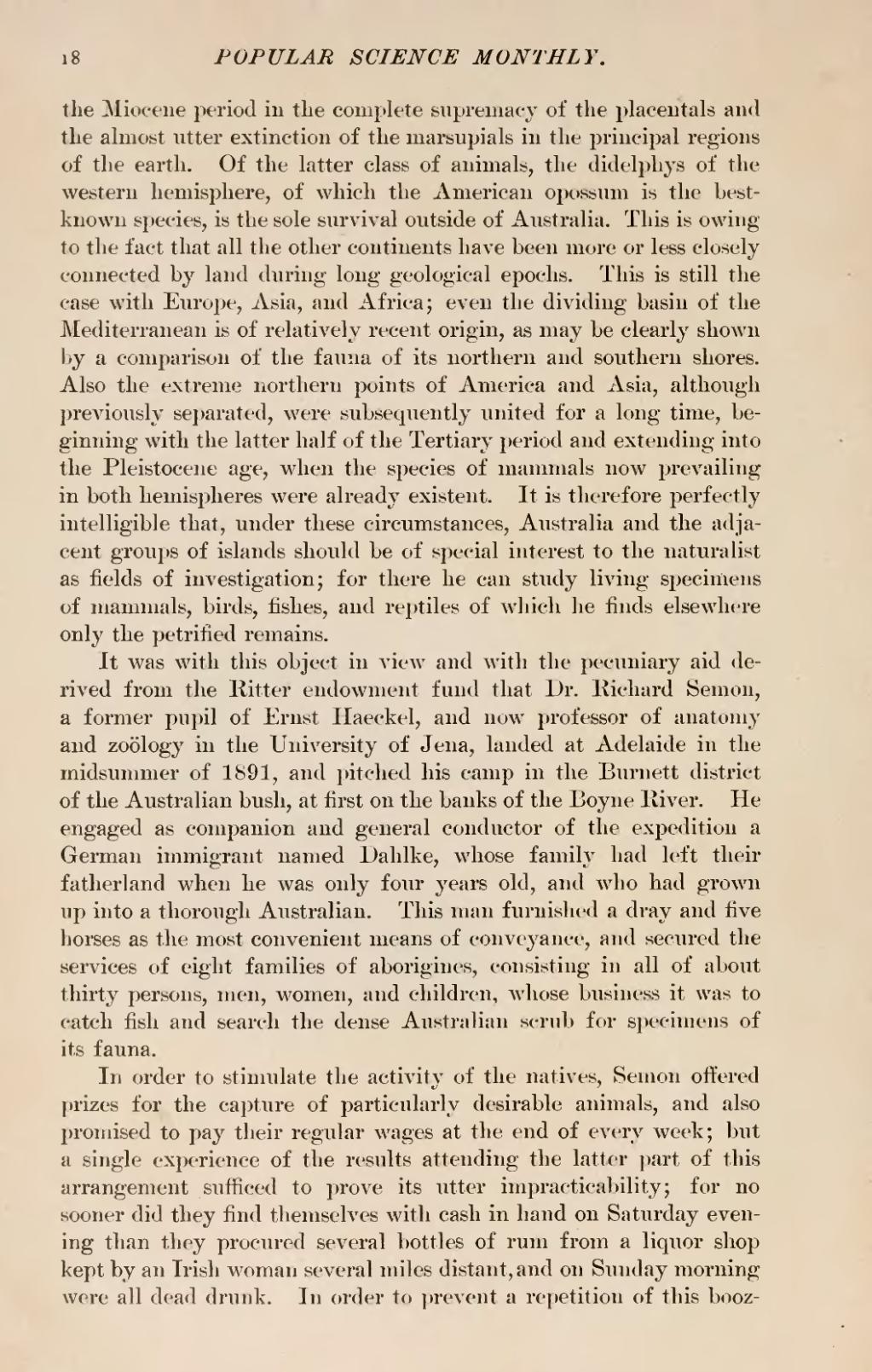the Miocene period in the complete supremacy of the placentals and the almost utter extinction of the marsupials in the principal regions of the earth. Of the latter class of animals, the didelphys of the western hemisphere, of which the American opossum is the best-known species, is the sole survival outside of Australia. This is owing to the fact that all the other continents have been more or less closely connected by land during long geological epochs. This is still the case with Europe, Asia, and Africa; even the dividing basin of the Mediterranean is of relatively recent origin, as may be clearly shown by a comparison of the fauna of its northern and southern shores. Also the extreme northern points of America and Asia, although previously separated, were subsequently united for a long time, beginning with the latter half of the Tertiary period and extending into the Pleistocene age, when the species of mammals now prevailing in both hemispheres were already existent. It is therefore perfectly intelligible that, under these circumstances, Australia and the adjacent groups of islands should be of special interest to the naturalist as fields of investigation; for there he can study living specimens of mammals, birds, fishes, and reptiles of which he finds elsewhere only the petrified remains.
It was with this object in view and with the pecuniary aid derived from the Hitter endowment fund that Dr. Richard Semon, a former pupil of Ernst Haeckel, and now professor of anatomy and zoölogy in the University of Jena, landed at Adelaide in the midsummer of 1891, and pitched his camp in the Burnett district of the Australian bush, at first on the banks of the Boyne River. He engaged as companion and general conductor of the expedition a German immigrant named Dahlke, whose family had left their fatherland when he was only four years old, and who had grown up into a thorough Australian. This man furnished a dray and five horses as the most convenient means of conveyance, and secured the services of eight families of aborigines, consisting in all of about thirty persons, men, women, and children, whose business it was to catch fish and search the dense Australian scrub for specimens of its fauna.
In order to stimulate the activity of the natives, Semon offered prizes for the capture of particularly desirable animals, and also promised to pay their regular wages at the end of every week; but a single experience of the results attending the latter part of this arrangement sufficed to prove its utter impracticability; for no sooner did they find themselves with cash in hand on Saturday evening than they procured several bottles of rum from a liquor shop kept by an Irish woman several miles distant, and on Sunday morning were all dead drunk. In order to prevent a repetition of this booz-
